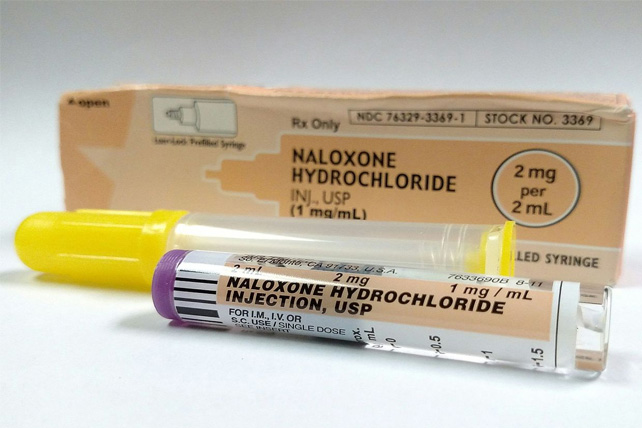During a work trip to Bangkok a few weeks ago, I spoke to a colleague, Ignatius from Indonesia. “OST in prisons is being stopped later this year”, he said, looking deflated, “the funding’s run out and so the programmes are closing”. Opioid substitution therapy (OST) is recognised by the World Health Organisation as “effective in substantially reducing illicit opiate use, HIV risk behaviours, death from overdose, and criminal activity”. It is a vital harm reduction measure for people who use opiates, and is much-needed both inside and outside of prisons; any country’s backtracking on this provision can have potentially severe consequences for people who use drugs.
My name is Katie Stone and I’ve led the development of Harm Reduction International’s biennial Global State of Harm Reduction (“the Global State”) publication since 2014. Since 2006, the Global State has been mapping data and responses to HIV and Hepatitis C epidemics relating to injecting and non-injecting drug use. Harm Reduction International works with practitioners, academics, advocates, and activists around the world to compile the latest data to inform evidence-based advocacy across our sector.
We’re now 12 months from the launch of the Global State 2018. The Global State is unique because it is a product of the harm reduction community for the harm reduction community. To ensure that the Global State continues to be a strong resource that serves the community, our first step for the 2018 publication was initiating a conversation with partners.
In October 2017, we reached out to more than 100 civil society partners, organisations of people who use drugs, academics, service providers, and donors all over the globe with a survey. We wanted to understand how the community uses the Global State and how it could be improved. This is what we found – and what we’ll be doing to strengthen the Global State 2018:
Amphetamines
We received strong interest in seeing more data on amphetamine-type stimulants (ATS) and emerging harm reduction interventions for ATS use (including on paraphernalia and intervention information). This reflected drug use patterns in Latin America and Asia, as well as shifting trends in drug use globally.
In the Global State 2018, we plan to share more information on the availability and type of harm reductions services for ATS that are being provided in each region of the world.
Naloxone
Recognising the horrific rise in opioid overdoses, respondents from North America and Western Europe want to see more data on naloxone availability and peer distribution of naloxone.
In the Global State 2018, we will move from reporting on naloxone in the narrative of the report to including data on naloxone availability and peer distribution in the data tables at the beginning of each regional chapter.
Drug checking (pill testing)
Respondents reported interest in drug checking as an emerging harm reduction intervention – often most relevant among youth and people in urban settings. For example, drug testing in a number of European countries allows individuals to submit samples for drug identification and purity analysis for the purposes of both harm minimisation and information provision on the availability and emergence of new psychoactive substances (NPS).
In the Global State 2018, we will include drug checking in the narrative sections of regions which are undertaking such initiatives.
New Psychoactive Substances
New psychoactive substances (NPS) have lawmakers in a frenzy in many middle and high-income countries, and we – as a community – know an insufficient amount about the potency, effects, and contraindications of NPS.
In the Global State 2018, we will cover NPS as a specific thematic area, while acknowledging the challenges of a fast-moving market and the scarcity of relevant data collection.
We will continue to highlight policy and human rights developments that relate to harm reduction, alongside any changes in the availability and accessibility of health and harm reduction services for people who use drugs. This includes access to testing and treatment for HIV, Hepatitis C, and tuberculosis. We will continue to dedicate space in the report to drug consumption rooms, and we anticipate that these will feature more prominently in the 2018 report due to the growing international prevalence of these life-saving interventions in recent years.
While we document access to needle-syringe programmes and OST in prisons in the Global State reports, our more in-depth research on harm reduction interventions in prison is contained in focused reports and briefings, as is our research and commentary on The Death Penalty for Drug Offences.
This year, HRI will also produce a standalone report on the state of harm reduction funding around the world. But, as the harm reduction funding crisis continues to be a major barrier to progress across much of the globe, this will also receive considerable focus in the Global State 2018 report.
Broadly, we were excited to receive overwhelmingly positive feedback about the Global State and its utility. For example, NGOs and researchers in Latin America reported using the Global State for trainings, advocacy, and research; respondents from Bangladesh and Uganda described using the Global State data for strategy development and proposal writing; and international NGOs described how they found the Global State to be a useful source of data for advocacy.
At Harm Reduction International, we’re proud to author the only report that provides an independent analysis of the state of harm reduction in the world, and we’re immensely grateful for the partnerships that make this possible. Watch this space in the coming months, for updates from around the world on the Global State of Harm Reduction 2018.
This is the first in a series of TalkingDrugs articles being published in the run-up to the release of the Global State of Harm Reduction 2018. View the 2016 publication here.
* Katie Stone is a Research Analyst at Harm Reduction International, a leading international NGO which works to reduce the negative health, social and human rights impacts of drug use and drug policy by promoting evidence-based public health policies and practices, and human rights based approaches to drug policy.


